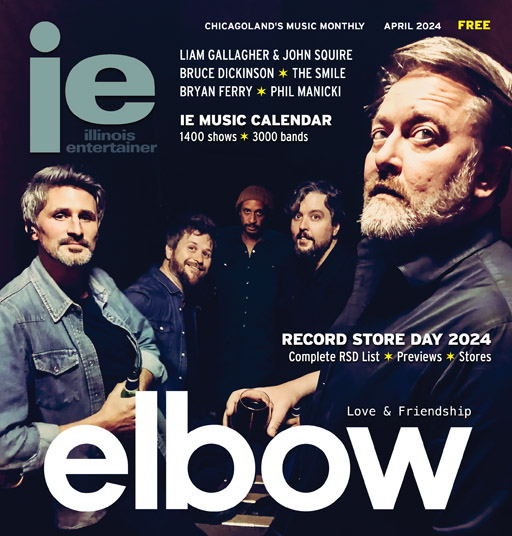Smiling Scottish Eyes
March traditionally inspires lots of Celtic music and celebrations in honor of St. Patrick’s Day, but it’s important to note Celtic doesn’t just mean Irish. As a matter of fact, St. Patrick wasn’t actually Irish at all and some historians place his birth in Scotland, some in Wales. It’s a fitting reality considering after the Irish, the biggest groups of Celtic people in the U.S. are the Scottish, followed by the Welsh. The Celtic definition also includes the Manx from the Isle Of Man, the Cornish from Cornwall, and the Bretons from Brittany (France). Though all of these Celtic groups are based in Europe, Cape Breton, Novia Scotia is one place outside of the European continent where traditional Celtic culture is experiencing a rebirth.

“My family came over to Cape Breton in 1824. I’m a third-generation Canadian but I was always curious about Scottish culture,” says Mary Jane Lamond, a critically acclaimed singer-songwriter who is part of a Cape Breton movement to preserve the disappearing Scottish Gaelic language. Although Cape Breton is the only place outside of Scotland where Scottish Gaelic is spoken, there are only about 500 native speakers left, and Lamond has helped reverse the trend. In 1997, she kicked off a traditional Celtic music explosion by releasing Suas e! (Turtlemusik), a finely crafted collection of ancient Gaelic tunes paired with contemporary pop sounds. The CD earned major Canadian music awards along with renewed attention for Celtic culture. Her subsequent Turtlemusik releases — 1999’s Lán Dúi and 2001’s Gaelic Songs Of Cape Breton (Orain Ghaidhlig) — established Lamond as one of the most renowned Gaelic singers.
The recently released Storas (Treasures) reinforces her position with a breathtaking presentation of traditional Scottish songs accompanied by not-so-traditional instrumentation and harmony. “I am part of the modern world, I like to arrange music and experiment with sound,” she says, explaining her take on Gaelic music. “Traditional Gaelic singers like things unaccompanied, but when you sing in a language that a lot of people don’t understand, the music adds another layer to connect the music to listeners.”
Thanks to her pure, haunting voice and innovative, yet reverent arrangements, there’s been a lot of connecting going on. Storas flows with centuries-old tunes brought to life by Lamond’s soaring acoustic band and her masterful weaving of understated emotion layered with sparkling nuances. On 11 distinctive tracks, Lamond glides from milling songs to laments to jaunty dance numbers. Despite their varied original purpose, all retain a glimmer of melancholy, resonating long after they’re over. “I would say that people compose poetry to assuage pain,” says Lamond of the sadness that seems to linger in most Celtic verse. “There are a lot of local songs that would have been humorous and they fall out of existence because they were tied to daily events. There are also a lot of laments in the bardic tradition. The bards for the hereditary chiefs had to write eulogies as a main part of their jobs.”
An acknowledged authority on Celtic history and culture with a bachelor’s degree in Celtic studies, Lamond didn’t grow up speaking Gaelic and didn’t even begin delving into Cape Breton’s trove of traditional music until she was well into adulthood. But the glimpses she caught growing up — hearing her grandparents speak the language; learning to sing phonetically in a Gaelic choir — helped ignite her interest. “I always loved the songs. I loved the melodies even though I didn’t know the language. There was always a curiosity there.” The turning point came when she was invited to a traditional “milling frolic” (a group, usually women, who sing as they mill wool by hand) in 1989. “There were all these people sitting at a table, pounding cloth and singing. It was so rhythmic and the melodies were so great. That was it. I knew I had found my voice.”
The other way she finds her voice is by sifting through archival tapes to uncover traditional tunes to perform. This is how she discovered two of the most striking songs on the album, “Gur e mo rún Dómhnallach (It Is My Love The MacDonald Man)” and “Blár Inbhir Lóchaidh (The Battle Of Inverlochy).” The latter dates back to 1645, and Lamond performs the lament of a woman who has lost her father, husband, four brothers, and three sons, a capella with dramatic pacing. The former was gleaned from a Smithsonian tape from the ’50s and is a typical milling song about a lover away at sea, accented with light percussion and a lively chorus.
“I get described as a preservationist but I don’t see myself that way,” she says. “It’s my life and passion. I love to listen to archival tapes. You become an interpreter or a vessel for the songs. It feels amazing to sing a song that came from such a far away time. The tenacity of the culture, that it could survive all that time, is inspiring. Preserving a culture has to be part of a grassroots movement. I promote the culture. Hearing the music might inspire people to learn the language. Just now, people are starting to appreciate the value of the language. I want people to enjoy the beauty of the songs as much as I enjoy singing them.”
— Rosalind Cummings-Yeates
Category: Monthly










Celtic music is alive and well in Brittany. For example, the harp had been common in Brittany in the Middle Ages, but had disappeared by the 18th century. In 1950s the Celtic harp or Breton harp has taken its place back into Breton music.